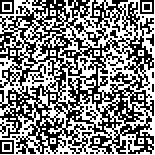| 引用本文: | 蒋艳,赵琳琳,马静,彭岩枫,徐继玉,张得钧.藏药三果汤调节Nrf2/HO-1信号通路干预高脂血症大鼠的作用机制[J].中国现代应用药学,2024,41(6):743-749. |
| JIANG Yan,ZHAO Linlin,MA Jing,PENG Yanfeng,XU Jiyu,ZHANG Dejun.Mechanism of Tibetan Medicine Sanguo Decoction Prevent High-Fat Diet-induced Hyperlipidemia Rats by Regulating Nrf2/HO-1 Signal Pathway[J].Chin J Mod Appl Pharm(中国现代应用药学),2024,41(6):743-749. |
|
| |
|
|
| 本文已被:浏览 1134次 下载 735次 |

码上扫一扫! |
|
|
| 藏药三果汤调节Nrf2/HO-1信号通路干预高脂血症大鼠的作用机制 |
|
蒋艳1,2,3, 赵琳琳1,2,3, 马静1,2,3, 彭岩枫4, 徐继玉4, 张得钧4
|
|
1.青海大学高原医学研究中心,西宁 810001;2.高原医学教育部重点实验室,西宁 810001;3.青海省高原医学应用基础重点实验室(青海-犹他高原医学联合重点实验室),西宁 810001;4.青海大学生态环境工程学院,西宁 810016
|
|
| 摘要: |
| 目的 基于Nrf2/HO-1信号通路探讨藏药三果汤对高脂血症大鼠保护作用及相关作用机制。方法 雄性SD大鼠48只,随机分为6组,即正常对照组、模型对照组、辛伐他汀组(3.5 mg·kg-1),藏药三果汤低、中、高剂量组(0.43,0.86,1.72 g·kg-1),每组8只。正常对照组给予基础饲料喂养,其余各组给予H10060高脂饲料喂养,制备高脂血症大鼠模型,造模的同时,各给药组每天1次给予相应药物灌胃,正常对照组、模型对照组给予等体积的生理盐水(1次·d-1),连续灌胃6周。实验期间每周固定时间称取各组大鼠体质量1次,6周后试剂盒检测血清中血脂[总胆固醇(totalcholesterol,TC)、甘油三酯(triglyceride,TG)、低密度脂蛋白(low density lipoprotein,LDL)、高密度脂蛋白(high density lipoprotein,HDL)]及氧化指标[丙二醛(malondialdehyde,MDA)、超氧化物歧化酶(superoxide dismutase,SOD)、谷胱甘肽(glutathione,GSH)]的水平。Western blotting测定肝组织中核因子E2相关因子2(nuclear factor erythroid 2-related factor 2,Nrf2)、血红素氧合酶1(heme oxygenase 1,HO-1)、Keap1、醌氧化还原酶1(quinone oxidoreductase,NQO1)蛋白表达,采用Person相关性分析血脂与氧化指标之间的相关性。结果 与正常对照组比较,模型对照组的体质量明显增加,血清中的TC、TG、LDL、MDA含量明显升高,而血清中HDL含量明显减低,SOD、GSH活力明显减低;与模型对照组比较,各给药组的体质量减轻,血清中的TC、TG、LDL、MDA含量明显减低,血清中的HDL含量明显升高,SOD、GSH活力明显升高。与正常对照组比较,模型对照组Keap1蛋白水平表达明显上调,Nrf2、HO-1与NQO1蛋白水平表达明显下调;与模型对照组比较,三果汤低、高剂量肝组织中的Keap1蛋白水平表达明显下调,Nrf2、HO-1与NQO1蛋白水平表达明显上调。相关性分析可见TG与SOD、HO-1及NQO1呈负相关,与Keap1呈正相关,TC与SOD、HO-1、GSH及Nrf2呈负相关,与Keap1及MDA呈正相关。结论 藏药三果汤可改善高脂血症大鼠体质量及血脂水平,其机制可能与调节Nrf2/HO-1信号通路,改善氧化应激有关。 |
| 关键词: 藏药 三果汤 高脂血症 大鼠 氧化应激 Nrf2/HO-1 |
| DOI:10.13748/j.cnki.issn1007-7693.20224123 |
| 分类号:R285.5 |
| 基金项目:中国科学院青海省人民政府三江源国家公园联合研究专项项目(LHZX-2020-09) |
|
| Mechanism of Tibetan Medicine Sanguo Decoction Prevent High-Fat Diet-induced Hyperlipidemia Rats by Regulating Nrf2/HO-1 Signal Pathway |
|
JIANG Yan1,2,3, ZHAO Linlin1,2,3, MA Jing1,2,3, PENG Yanfeng4, XU Jiyu4, ZHANG Dejun4
|
|
1.Research Center for High Altitude Medicine, Qinghai University, Xining 810001, China;2.Key Laboratory of High-Altitude Medicine(Ministry of Education), Xining 810001, China;3.Key Laboratory of Application and Foundation for High Altitude Medicine Research in Qinghai Province(Qinghai-Utah Joint Research Key Lab for High Altitude Medicine), Xining 810001, China;4.College of Ecology and Environmental Engineering, Qinghai University, Xining 810016, China
|
| Abstract: |
| OBJECTIVE To investigate the protective effect of Tibetan medicine Sanguo decoction on hyperlipidemic rats based on the Nrf2/HO-1 signaling pathway and its related mechanisms. METHODS Forty-eight male SD rats were randomly divided into six groups: the normal control group, the model control group, the simvastatin group(3.5 mg·kg-1), and the Tibetan medicine Sanguo decoction low, medium, and high dose groups(0.43 , 0.86 , 1.72 g·kg-1), with eight rats in each group. The normal control group was fed a basal diet, and the remaining groups were fed the H10060 high-fat diet to prepare a hyperlipidemic rat model. At the same time, each treatment group was given corresponding drugs by gavage once a day. The normal control group and model control group were given an equal volume of physiological saline(once a day) by gavage for 6 consecutive weeks. After 6 weeks, serum levels of lipids[totalcholesterol(TC), triglyceride(TG), low density lipoprotein(LDL) and high density lipoprotein(HDL)] and oxidative parameters[malondialdehyde(MDA), superoxide dismutase(SOD), and glutathione(GSH)] were measured by reagent kit. Nuclear factor erythroid 2-related factor 2(Nrf2), heme oxygenase 1(HO-1), Keap1, and quinone oxidoreductase(NQO1) protein expression in liver tissues were analyzed by Western blotting. The correlation of lipid and oxidative indices was investigated by person correlation. RESULTS Compared with the normal control group, the model control group showed a significant increase in body weight, significantly higher serum levels of TC, TG, LDL, and MDA, significantly lower serum levels of HDL, and significantly lower SOD and GSH activity. Compared with the model control group, each administration group showed a decrease in body weight and serum TC, TG, LDL, and MDA levels. In comparison with the model control group, the body weight was reduced, the serum levels of TC, TG, LDL, and MDA were significantly lower, the serum levels of HDL were significantly higher, and the SOD and GSH activities were significantly higher. Keap1 protein level expression was significantly up-regulated compared with the normal control group, and Nrf2, HO-1, and NQO1 protein level expression were significantly down-regulated in the model control group. Keap1 protein level expression was significantly down-regulated compared to the model control group, and Nrf2, HO-1, and NQO1 protein level expression were significantly up-regulated in the liver tissues of low and high doses of Sanguo decoction. The expressions of Nrf2, HO-1, and NQO1 were significantly up-regulated. Correlation analysis showed that TG was negatively correlated with SOD, HO-1, and NQO1, and positively correlated with Keap1, while TC was negatively correlated with SOD, HO-1, GSH, and Nrf2, and positively correlated with Keap1 and MDA. CONCLUSION The Tibetan medicine Sanguo decoction can improve body weight and blood lipid levels in hyperlipidemic rats, and the mechanism may be related to the regulation of the Nrf2/HO-1 signaling pathway and the improvement of oxidative stress. |
| Key words: Tibetan medicine Sanguo decoction hyperlipidemic rats oxidative stress Nrf2/HO-1 |
|
|
|
|
